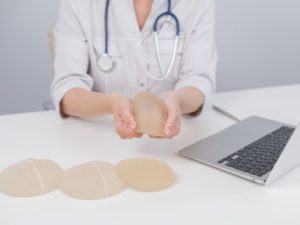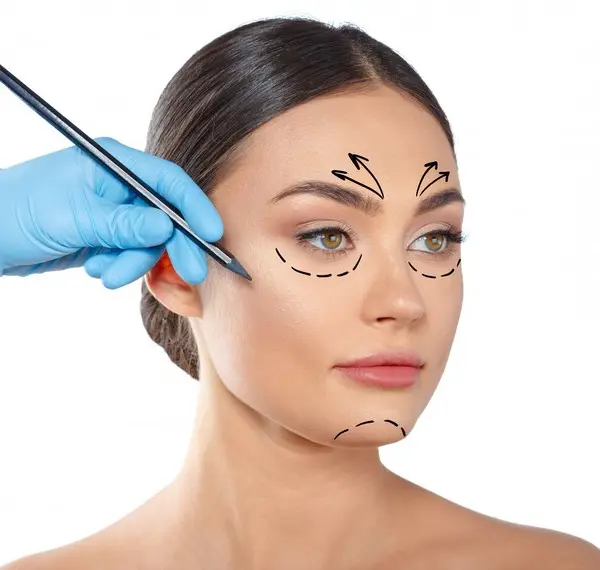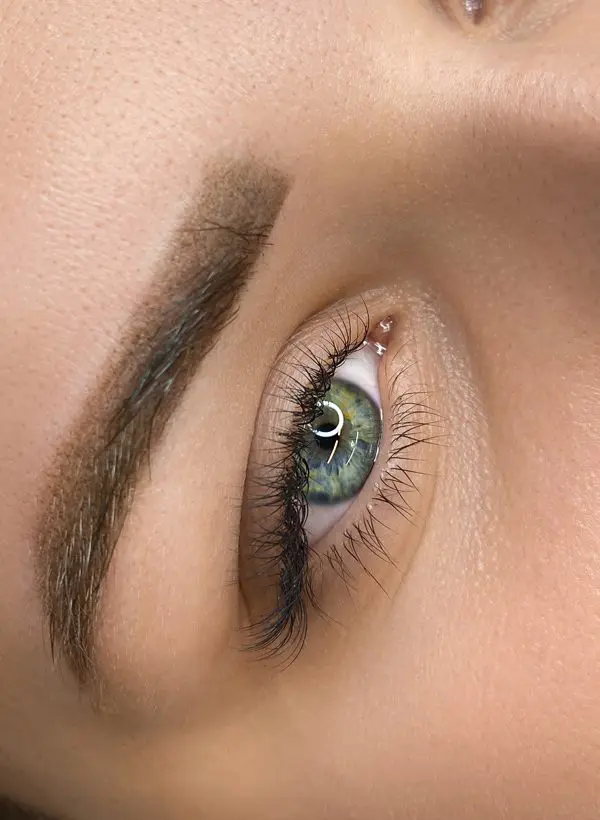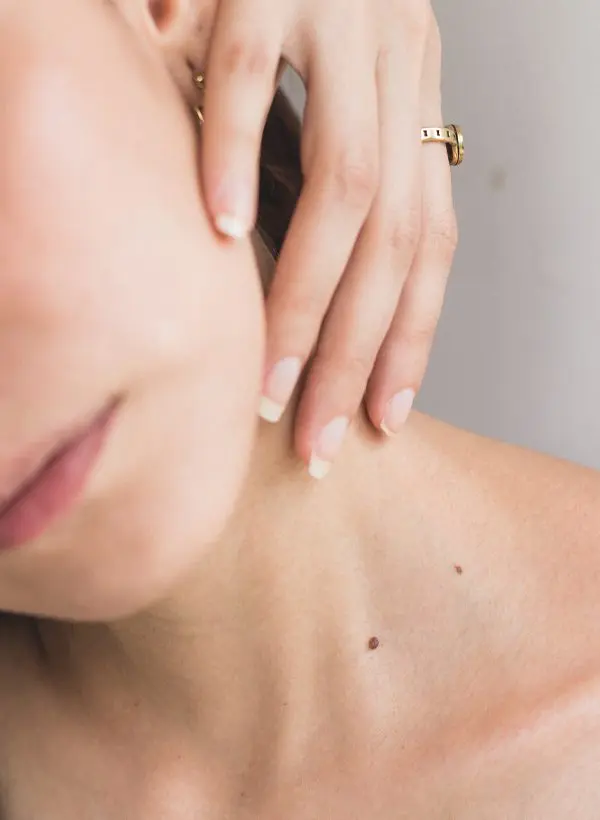Treatments —Fat
Fat Transfer to the Breast
Fat Transfer to the Breast: Overview
For many women, achieving a fuller, more natural-looking bust without implants is a deeply personal goal tied to confidence, comfort, and self-image. Fat transfer to the breast offers a gentle, minimally invasive solution by using your body’s own fat to enhance volume and shape. This technique not only avoids synthetic materials but also provides the added benefit of contouring areas like the abdomen or thighs during fat collection.

Overview
Achieving a well-refreshed face is a common aesthetic goal for the majority of individuals seeking to enhance their overall appearance and boost self-confidence. A harmoniously sculpted facial contour not only contributes to a youthful and vibrant look but also reflects one’s inner vitality and health.
Dr Faisal Salim specialises in this advanced procedure of fat transfer breast augmentation in Dubai. He is skilled at combining artistry with surgical precision to ensure results that feel and look authentically you. Whether you’re seeking subtle enhancement or restoring lost volume, Dr. Salim’s approach prioritizes safety, harmony, and natural beauty.
Fat Transfer to the Breast – A Natural Way to Enhance Your Curves
If you’re seeking a subtle, natural-looking breast enhancement without implants, fat transfer to the breast could be your ideal solution. This innovative technique uses your own body fat to gently increase breast volume while contouring other areas of the body. Dr. Faisal Salim, a highly regarded plastic surgeon known for his precision and artistic eye, offers this advanced procedure to women looking for a more organic and harmonious enhancement.
What is fat transfer breast augmentation?
Fat transfer breast augmentation—also known as autologous fat grafting—is a cosmetic procedure that involves removing fat from one area of your body (mainly from the abdomen, thighs, or flanks) and injecting it into your breasts. Unlike traditional augmentation methods, this technique avoids synthetic implants, instead using your own tissue to enhance breast shape and size.
Dr Faisal Salim adopts a tailored approach to fat grafting, ensuring a soft, balanced, and naturally youthful result that blends beautifully with your body’s contours.
Who is a good candidate for breast fat transfer?
You may be a good candidate if you:
- Desire a natural enhancement without implants
- Have adequate fat in the donor areas
- Are within a healthy weight range
- Do not smoke or are willing to stop
- Have realistic expectations
Fat transfer is ideal for correcting mild volume loss, asymmetry, or improving shape after pregnancy or weight loss. Dr. Salim ensures each patient is thoroughly assessed and guided toward the safest and most effective option.
Fat Transfer Fact Check According to the American Society of Plastic Surgeons, fat grafting procedures, including breast enhancement, have seen a 12% annual increase in popularity, especially among women preferring natural body contouring solutions. |
Methods of Fat Transfer to the Breast
Dr Faisal Salim follows a meticulous, multi-step process to ensure long-lasting, safe, and aesthetically pleasing outcomes.
The general method of fat transfer into the breast involves:
- Liposuction: Gentle removal of fat from selected areas using a fine cannula.
- Purification: The harvested fat is processed to remove impurities and excess fluid.
- Reinjection: The purified fat is carefully injected into different layers of the breast tissue using fine cannulas for even distribution and optimal absorption.
This precise layering technique is key to achieving soft contours, better fat survival rates, and a seamless look.
The Fat Transfer to Breast Procedure: Step-by-Step
Here’s what you can expect when undergoing fat transfer breast augmentation with Dr Faisal Salim:
1. Consultation and Planning
An end-to-end consultation is conducted to assess your body goals, determine fat donor areas, and confirm your suitability for the procedure.
2. Procedure Day
- Performed under local anesthesia with sedation or general anesthesia.
- Fat is harvested via liposuction, purified, and then reinjected into the breasts.
- The entire process typically takes 2 to 3 hours.
3. Post-Procedure
You’ll be monitored and can usually return home the same day. Dr. Salim’s team provides detailed aftercare instructions and regular follow-up support.
Fat Transfer to Breast Recovery Time
Recovery post fat transfer breast augmentation surgery is generally smooth:
- Mild swelling and bruising: Common for 1–2 weeks.
- Return to work: Typically within 5–7 days.
- Light activity: Can resume after one week; avoid heavy lifting or intense workouts for 4–6 weeks.
- Final results: Visible around 3 months, once swelling resolves and fat stabilizes.
When it comes to fat transfer to breast surgery, Dr Faisal Salim emphasizes a personalized recovery plan to optimize healing and enhance long-term results.
How much fat do you need for a fat transfer to the breast?
The amount of fat required depends on your individual goals and body composition. Generally, a larger volume of fat is harvested than what is ultimately injected, as not all fat survives the transfer process. You must have sufficient donor fat for the procedure to achieve the desired results.
Dr. Faisal Salim carefully evaluates each patient’s body to determine if there is enough harvestable fat and discusses realistic expectations during your consultation. The exact approach and outcomes vary from person to person, and factors such as your body shape, fat availability, and desired enhancement will influence the final treatment plan.
Fat Transfer to Breast vs Implants: Which is better?
If you’re considering breast enhancement, both fat transfer to the breast and breast implants offer unique advantages. The best choice depends on your goals, body type, and desired results. Here’s a quick comparison to help you understand the key differences between natural breast augmentation with fat transfer and traditional breast implants.
Feature | Fat Transfer | Implants |
Material | Own fat | Silicone or saline |
Look & Feel | More natural | Noticeably augmented |
Volume Increase | Mild to moderate | Moderate to large |
Longevity | Long-lasting (with some resorption) | Long-lasting, may need replacement |
Risks | Minimal | Rupture, capsular contracture |
Scarring | Minimal | More noticeable incisions |
Dr Faisal Salim helps patients choose the right option based on their goals, anatomy, and preference for natural vs. synthetic enhancement.
Fat Transfer Breast Augmentation Dubai Cost
The cost of fat transfer to the breast in the UK typically depends on several factors:
- Surgeon’s expertise
- Complexity of fat harvesting
- Desired breast size increase
- Location and clinic facilities
Dr Faisal Salim offers competitive pricing with complete transparency, ensuring there are no hidden charges. Every procedure includes consultation, surgery, and personalized aftercare.
Can you transfer Fat to the breast?
Yes, absolutely. As long as you have sufficient body fat and realistic expectations, fat can safely and effectively be transferred to the breasts. The success of the procedure relies on factors like:
- Adequate donor fat
- Healthy skin elasticity
- No history of major breast conditions
Dr Faisal performs a detailed pre-operative assessment to confirm candidacy and outline the best strategy for success.
Does fat transfer to the breast last?
Fat transfer results are permanent, but with one caveat—not all transferred fat survives. On average:
- 60%–80% of the transferred fat integrates into the breast tissue.
- The rest is naturally reabsorbed by the body in the first few months.
- The fat that does “take” becomes a living part of your breast, giving long-term results.
Dr Faisal uses refined injection techniques to maximize fat survival, and some patients may opt for a second session for additional volume.
Breast Augmentation with Fat Transfer: Why choose it?
Many patients are now choosing fat transfer over implants for several key reasons:
- Natural Look and Feel: Because your own fat is used, the breasts look and feel more natural than with implants.
- Dual Benefit: Contour improvements in donor areas such as the tummy, thighs, or flanks.
- No Foreign Material: Ideal for those who prefer a more natural approach or are have concerns about implant-related complications.
- Subtle Enhancement: Perfect for women seeking a modest increase in volume (typically ½ to 1 cup size).
Looking for expert hands in fat transfer breast augmentation in Dubai?
Choose Dr Faisal Salim for Fat Transfer Breast Augmentation!
Dr Faisal Salim is a highly sought-after cosmetic and reconstructive surgeon known for his detailed, patient-first approach and exceptional results. With a strong background in aesthetic breast surgery, he blends technical expertise with an artistic touch to create naturally beautiful outcomes that align with each patient’s goals.
Whether you’re seeking a soft enhancement, correction of asymmetry, or an implant-free alternative, Dr. Salim offers a safe, personalized journey from consultation through recovery.
Ready to explore natural breast enhancement?
Book your consultation with Dr Faisal Salim today and take the first step toward a more confident, sculpted you.
FAQs:
Fat transfer to the breast is a natural breast enhancement procedure where fat is gently removed from areas like the abdomen, thighs, or flanks through liposuction and then purified before being injected into the breasts. This offers a subtle increase in breast volume using your own body fat, without implants.
Dr. Faisal Salim uses advanced liposuction techniques to harvest fat from donor areas. The fat is carefully processed and strategically injected into the breasts to achieve a smooth, natural-looking enhancement. His meticulous approach ensures balanced volume and minimal scarring.
Yes, fat transfer to the breast is considered a safe procedure when performed by an experienced surgeon like Dr. Faisal Salim. Using your own fat reduces the risk of allergic reactions or implant-related complications. As with any surgery, following post-op care instructions is key to optimal results.
The benefits of fat transfer breast augmentation include:
A natural look and feel
Minimal scarring
Improvement of body contour by removing fat from unwanted areas
No risk of implant-related complications
The results of fat transfer to the breast are long-lasting. However, not all transferred fat will survive; typically about 60–80% of the fat remains permanently. Dr. Faisal Salim uses refined techniques to maximize fat retention and deliver lasting, beautiful results.
Ideal candidates are individuals seeking a modest increase in breast volume, have adequate fat for harvesting, and prefer a natural breast augmentation without implants. A consultation with Dr. Faisal Salim in Dubai will determine if this procedure is right for you.
Most patients can return to light activities within a few days, with full recovery typically taking 2 to 4 weeks. Dr. Faisal Salim provides detailed aftercare guidance to ensure smooth healing and the best possible outcome.
Yes, fat transfer breast augmentation can be combined with other body contouring procedures, such as a tummy tuck or liposuction. Many patients choose to pair treatments for more comprehensive results. Dr. Faisal Salim will advise the best options during your consultation.
The results are long-lasting. While some of the transferred fat is naturally reabsorbed by the body in the first few months, the fat that successfully establishes a blood supply remains permanently. Dr. Faisal Salim’s expert techniques help maximize long-term fat survival.
Dr. Faisal Salim is a highly skilled, UK-trained consultant plastic surgeon in Dubai, known for his precise, patient-tailored approach. His expertise in both liposuction and breast enhancement ensures safe, natural, and beautiful results with exceptional post-operative care.
Breast Related Treatments
At a Glance
At a Glance
Duration
3-4 Hours
Anaesthetic
General
Overnight Stay
1-2 Days
Return to work
14 Days
Return to exercise
6 Weeks
Final result
4-6 Months

Related Treatments
Videos
Patient Testimonials
News & Resources

What is a deep plane neck lift?
neck What is a deep plane neck lift? The neck plays an important role in framing the face, but it’s also one of the first areas to show signs of ageing. Loose skin, visible muscle bands, and sagging tissue can make the jawline look less defined. A deep plane neck

What is Face Contouring?
Face What is Face Contouring? Have you ever looked in the mirror and wished your jawline were sharper, your cheekbones more defined, or your facial proportions more balanced? People worldwide consider facial contouring to achieve better facial harmony, restore youthful definition, or correct naturally uneven proportions. It is sought by

What Is Best Breast Implant Placement Types?
Breast Implant What Is Best Breast Implant Placement Types? Exploring the Types of Breast Implant Placement and How to Choose the Right One for You? Breast augmentation is one of the most popular cosmetic surgical procedures globally. It helps women achieve fuller, well-shaped breasts that match their aesthetic goals. While










